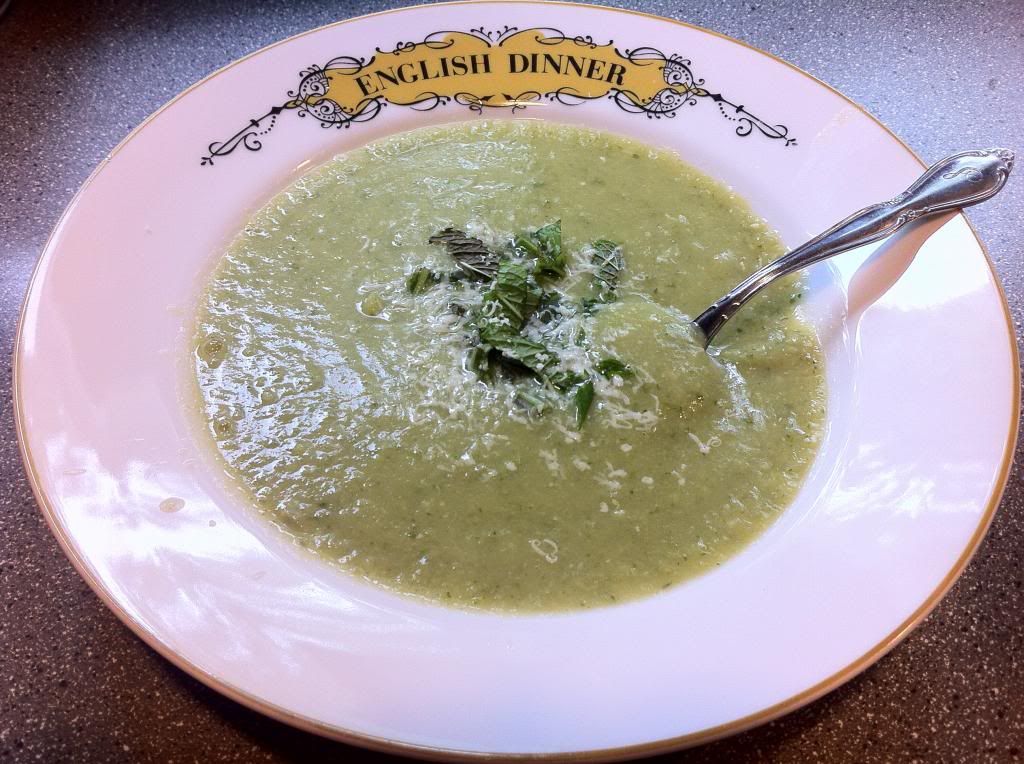
Today is supposed to be rainy and cool in New York, not even approaching 80F. Hurrah! With such weather, it's the ideal day to put up a small pot of soup!
I love soup. I love how its smell tiptoes out of the kitchen until it’s hiding in all parts of my house. I love how the steam tickles my eyes and tantalizes my mouth when its on the stove—and then when its in my bowl at the table. I don’t just have a personal love for soup; I believe soup is a perfect food. Soup forgives vegetables with no flavor, and it showcases herbs. There are light broths and hearty stews, and some type of soup for every mood in between. And soup will accept dietary restrictions easily—gluten free, meat free, peanut free, soggy cabbage free—you can still find a delicious soup recipe.
Today I am making a surprisingly filling fava bean and zucchini soup from the Riverford Farm Cookbook by Guy Watson and Jane Baxter (completely appropriate since the weather here is essentially English Summer weather). Guy Watson is the two-time BBC Farmer of the Year and 2012 Food Hero of the Devon Life, and his farm and veg-box distribution business has won a slew of other awards for having delicious organic and ethical food. He thinks about sustainability and ethics in food more than anyone else I’ve encountered. Here are excerpts from his “Ode to Dirt” in the cookbook:
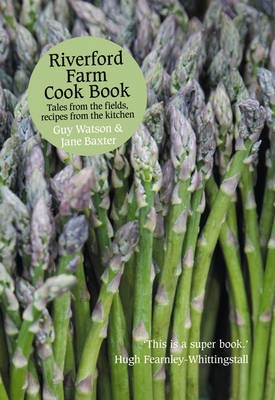
The problem with soil is that, to the casual observer, it is an inert, uninteresting inconvenience that sticks to your shoes and threatens to pollute and infect your food. Few appreciate that this is where terrestrial life begins, that it supports myriad organisms, that it is being destroyed by modern farming and that it needs our stewardship every bit as much as the giant panda.So often when you read about major problems in the world, the resolution seems impossible. But soil sterilization HAS a solution. Guy Watson and other conscientious farmers produce food every year without resorting to eliminating the variables in soil that they don’t fully understand. Even if you are still trying to find your own Guy Watson-level supplier, knowing that there are farmers considering themselves stewards of soil rather than as eradicators of pests is as comforting as eating soup.Soil sterilisation, as practised in greenhouses and strawberry growing, is one of the most hideous abuses of modern farming, virtually akin to Nazi book burnings in its reflection of the narrow-minded ignorance of its perpetrators.
A handful of healthy soil can contain millions of life forms from tens of thousands of different species, almost all benign or beneficial to us and our crops. Not only do they recycle organic matter, making nutrients available to plant roots, they also out-compete and even attack pathogenic bacteria, fungi, eelworms and slugs. Pesticides, fertilisers, animal wormers, excessive and poorly timed cultivation, compaction and poor drainage can all drastically reduce these populations, not by just a few per cent but by 10 or even 100 percent. Imagine the outcry from WWF if anyone could see the damage.
Fava Bean and Zucchini Soup (Adapted from Guy Watson/Jane Baxter's Recipe)
Serves 4 (3 in my house as the main course)1 onion, choppedIf you are using frozen fava beans, boil a small pot of water first. After the water has reached a rolling boil, add the fava beans. When all the beans float to the surface, drain the water off in a colander, and run cold water over the beans to keep them from cooking longer. Peel the coats off the beans while your other vegetables sweat in the next steps.
2 garlic cloves, crushed
2 Tbsp. olive oil, plus an extra splash to serve
2 medium-sized zucchini, grated
2 cups vegetable stock
+/- 14 oz. fava beans (I buy the 28 oz. frozen Goya packages)
small bunch of mint
small bunch of basil
salt and pepper, to taste
grated Parmesan cheese, to serve (I substituted Asiago to good effect)
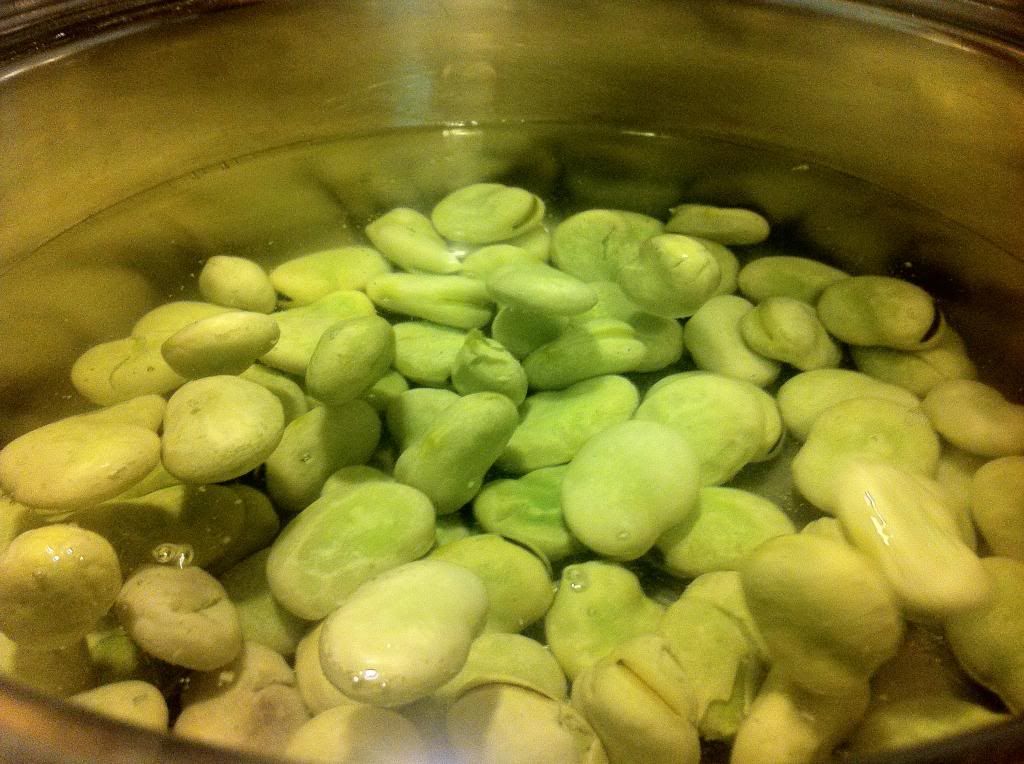
Frozen fava beans, just after being added to boiling water

When the beans rise to the surface, they're ready to be shelled
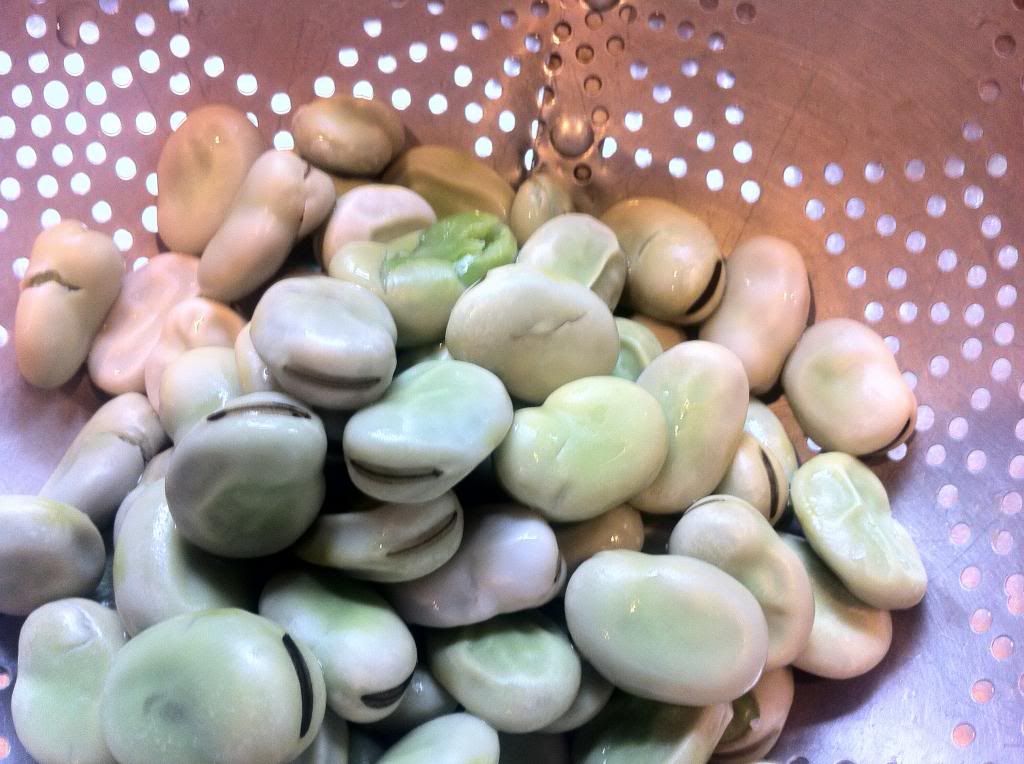
Another way to tell they'll be easy to shell is when you can see the bright green bean pushing through its coat
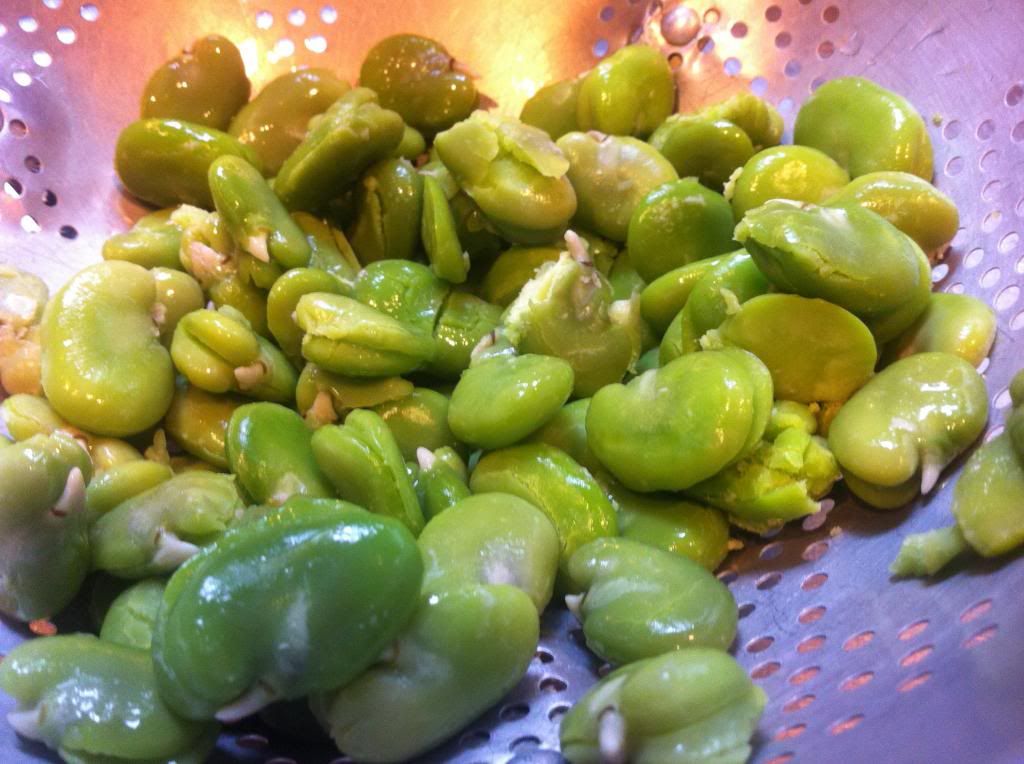
Once the coats are off, fava beans look much more appetizing
If you are using fresh fava beans, simply shell and de-coat them while you're following the directions for vegetable sweating (below).
In a saucepan, sweat the onion and garlic in the olive oil for 10 minutes until the onions are soft. (Medium low heat, stir everything enough so nothing browns.) Add the grated zucchini to the pan, stir a bit, and then cover for another 10 minutes of sweating.
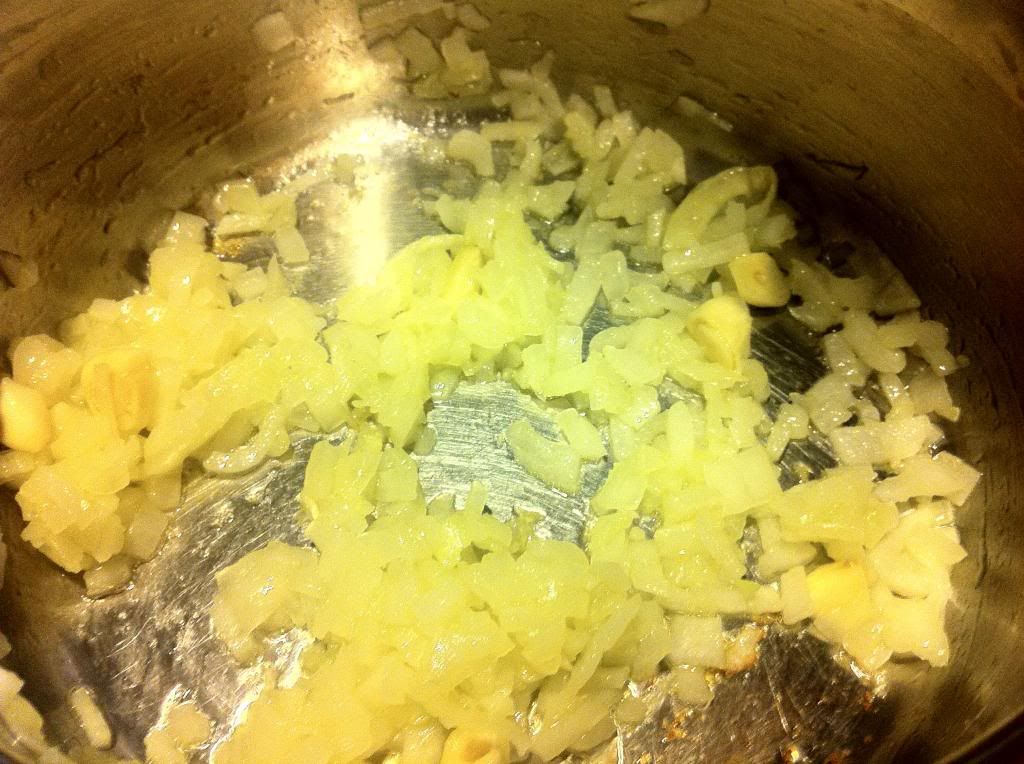

Add the vegetable stock and fava beans, and simmer for 10 minutes until the beans press apart when you press them against the side of the pan.
Using an immersion blender, purée the soup to your desired consistency. The Riverford Cookbook recommends keeping two thirds of the soup solid; when I made the soup last I made mine all liquid.
When you are ready to serve the soup, chop the leaves of both herbs (there will be edge browning if you do this too early). Drizzle some olive oil in each bowl, and add the herbs and hard cheese. I prefer the soup warm, but it tastes good at room temperature as well.
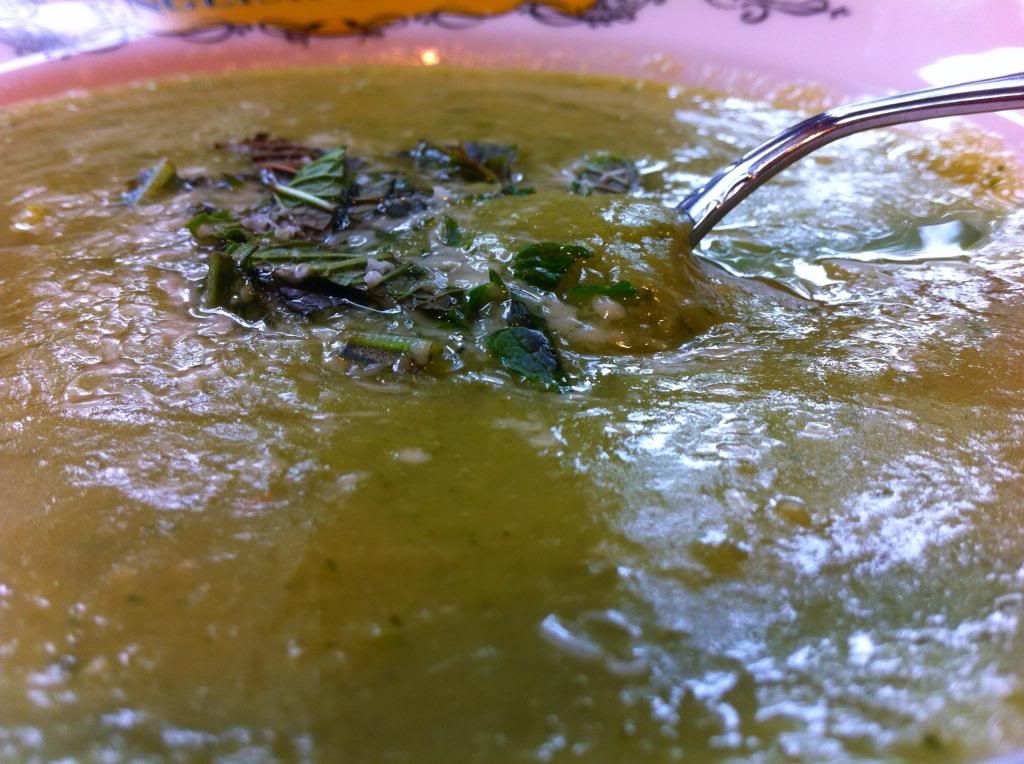







1 comment:
Looks yummy! And I think I'd be interested in reading the cookbook--I love when people write about something they believe in and feel passionately about as much as the author clearly does regarding sustainable and ethical farming.
Post a Comment